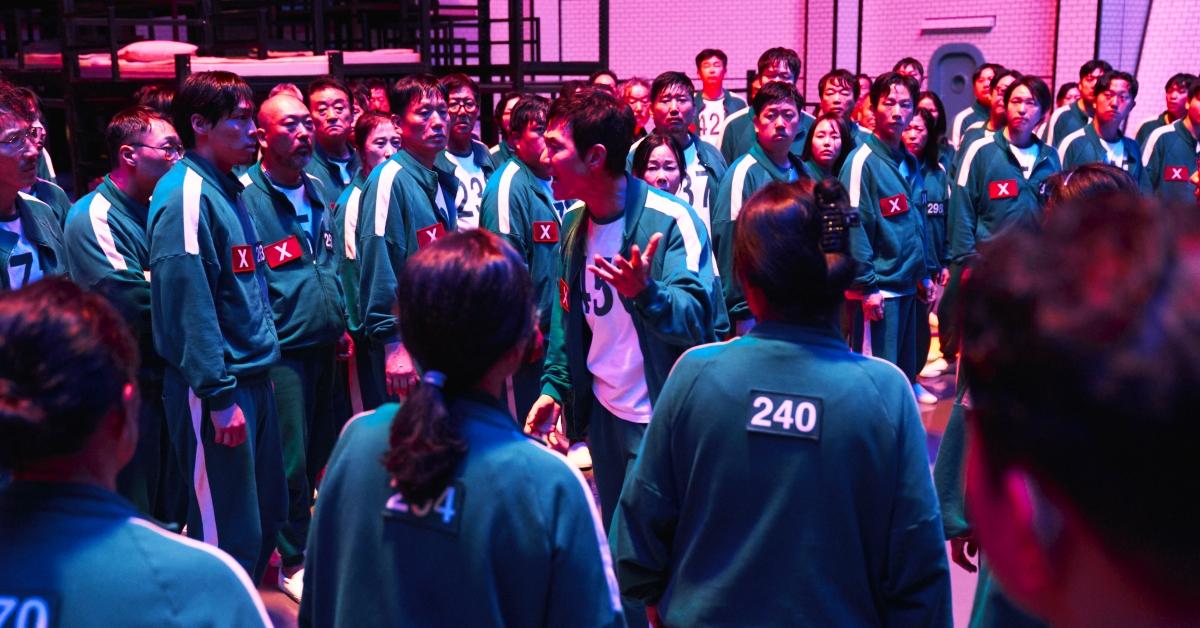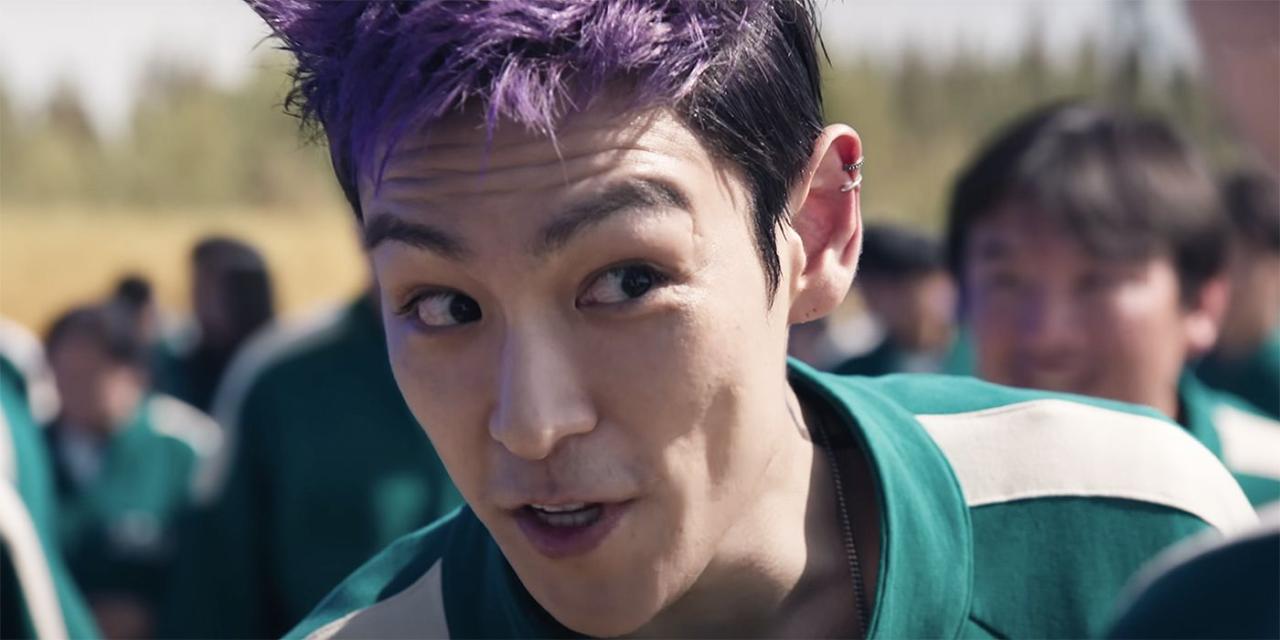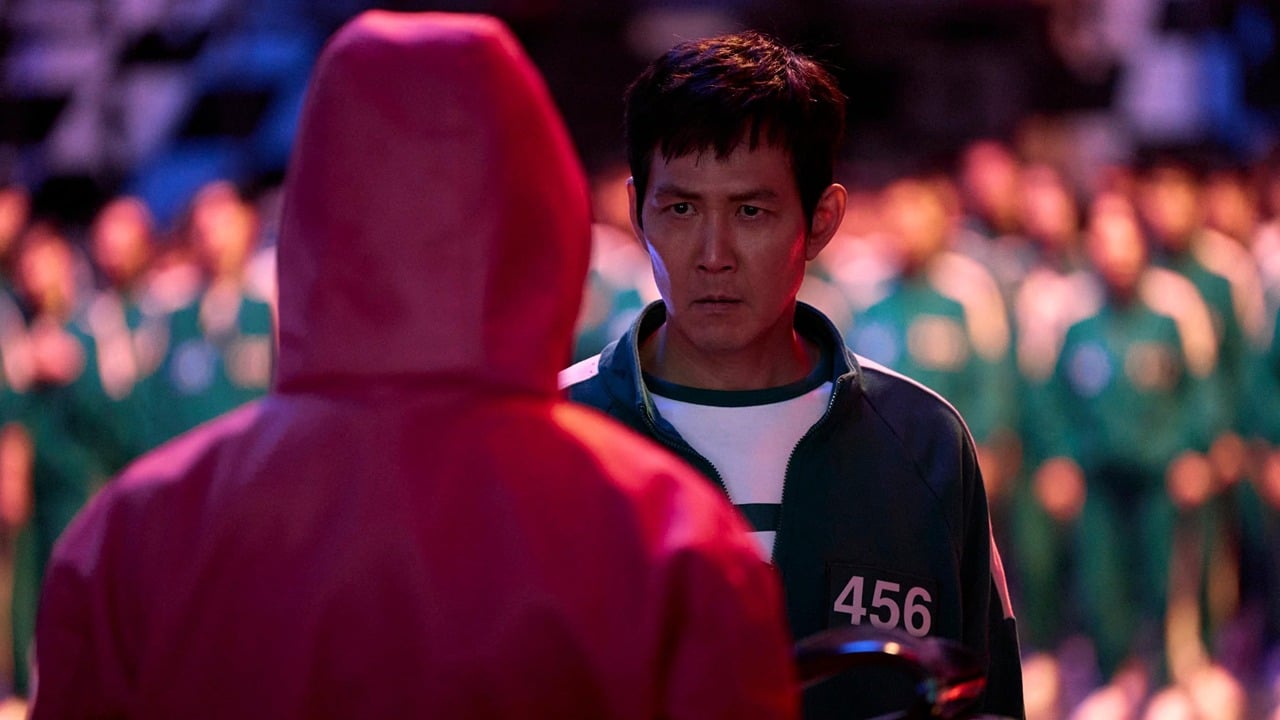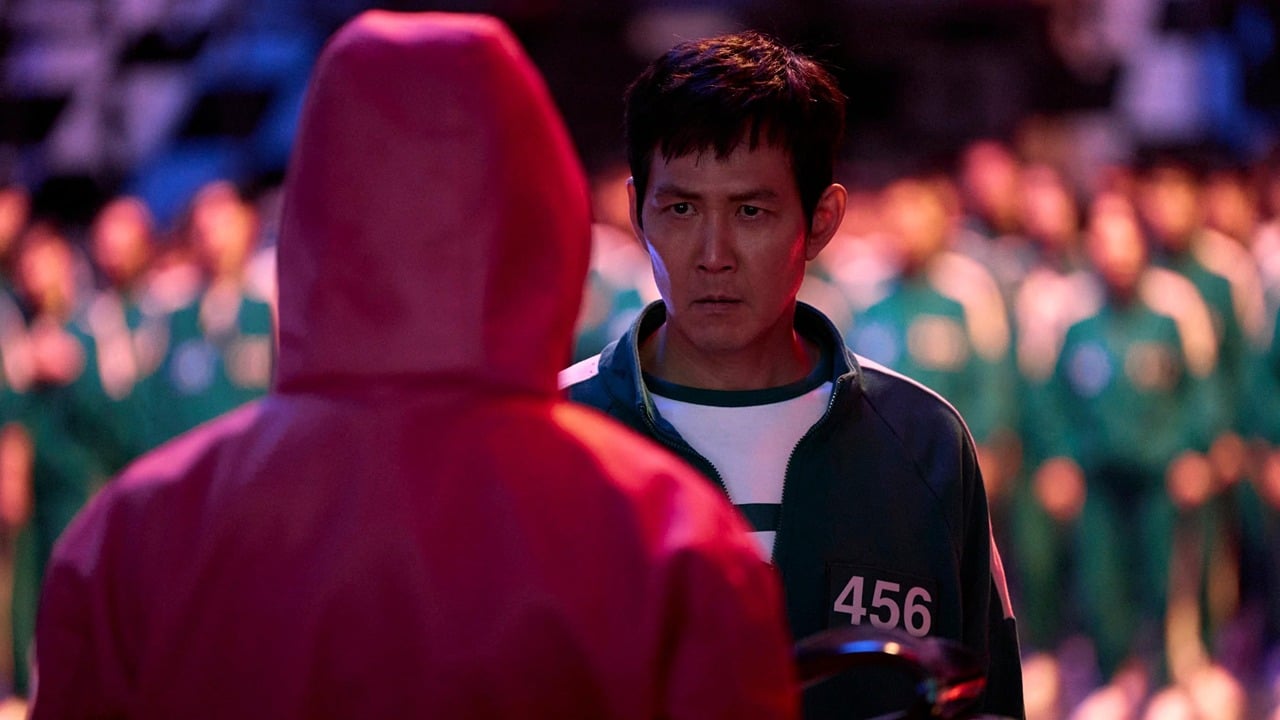Squid Game Histoire Vraie? The hit Netflix series, “Squid Game,” captivated audiences worldwide with its brutal depiction of debt-ridden individuals competing in deadly children’s games. But how much of this dystopian vision is rooted in reality? This exploration delves into the real-world parallels that inspired the show, examining economic inequalities, exploitative labor practices, and historical instances of child exploitation and survival games.
We’ll explore the socio-economic context of South Korea and analyze the show’s global impact, considering its visual storytelling and the ethical dilemmas it presents.
We’ll uncover the surprising connections between the fictional games and actual historical events, examining the cultural context and societal pressures that mirror the show’s themes. Prepare to question the line between entertainment and stark reality as we unravel the story behind “Squid Game’s” shocking success and its unsettling reflection of our world.
The Inspiration Behind “Squid Game”: Real-World Parallels
The dystopian world of “Squid Game” isn’t entirely fictional. Its brutal depiction of extreme competition and societal inequality finds disturbing echoes in real-world struggles faced by many globally. The series serves as a stark commentary on economic disparities, debt traps, and exploitative labor practices, drawing parallels with the harsh realities experienced by vulnerable populations worldwide.
Real-Life Economic Inequalities and Societal Pressures
The show highlights the crushing weight of debt and the desperation it can drive. Many individuals across the globe, particularly in developing nations, find themselves trapped in cycles of poverty, unable to escape the grip of predatory lenders and exploitative working conditions. The desperation depicted in “Squid Game,” where participants risk their lives for a chance at financial freedom, mirrors the real-life struggles of those facing insurmountable debt and limited opportunities.
Examples of Debt Traps and Exploitative Labor Practices

Examples abound. In many parts of the world, micro-loans with exorbitant interest rates trap individuals in a cycle of debt, leading to devastating consequences. Similarly, sweatshops and other forms of exploitative labor often leave workers with meager wages and dangerous working conditions, perpetuating a cycle of poverty. These situations often leave individuals with little choice but to accept dangerous and unfair employment, mirroring the desperation of the “Squid Game” participants.
Comparative Table: Games in “Squid Game” and Real-World Parallels
| Game Name | Show Version | Real-World Parallel | Cultural Context |
|---|---|---|---|
| Red Light, Green Light | Children’s game with deadly consequences | Traditional children’s game, often played with variations | Global; variations exist across cultures |
| Honeycomb (Dalgona Candy) | Carving shapes from a brittle candy | Traditional Korean street food game, testing skill and patience | Korean; tests dexterity and precision |
| Tug-of-War | Massive tug-of-war with elimination | Common children’s game and competitive sport | Global; emphasizes teamwork and strength |
| Marbles | High-stakes gambling with marbles | Traditional children’s game, often used for gambling | Global; variations in rules and stakes exist |
Child Exploitation and Survival Games: Historical Context: Squid Game Histoire Vraie
The desperation portrayed in “Squid Game,” particularly the willingness of adults to participate in life-threatening games, is sadly not without historical precedent. Throughout history, children have been subjected to brutal forms of exploitation, often forced into dangerous situations simply to survive. The show’s themes resonate with these historical realities, highlighting the vulnerability of children in the face of poverty and systemic injustice.
Historical Examples of Child Labor and its Consequences, Squid game histoire vraie
The Industrial Revolution saw widespread child labor in factories and mines, with children enduring grueling hours and dangerous conditions. The long-term consequences included stunted physical and mental development, along with increased susceptibility to illness and injury. These historical examples underscore the lasting impact of child exploitation on individuals and society.
Children Forced into Dangerous Situations
Beyond industrial settings, children throughout history have been forced into various dangerous situations, including military service, forced migration, and criminal activities. These situations often involved significant physical and psychological trauma, leaving lasting scars on the victims. The harsh realities faced by these children highlight the vulnerability of young people in times of conflict and poverty.
Historical Events Involving Children in High-Stakes Competitions

- The use of child soldiers in various conflicts throughout history.
- Historical accounts of children forced into gladiatorial combat or other forms of public spectacle.
- Traditional practices in some cultures involving children in high-risk rituals or competitions.
- Examples of child labor in dangerous industries such as mining or agriculture.
Korean Social Commentary and Cultural Influences
“Squid Game” isn’t just a global phenomenon; it’s deeply rooted in South Korean society and culture. The show’s themes of intense competition, economic disparity, and social pressure reflect specific socio-economic factors within South Korea, creating a powerful commentary on the nation’s complexities.
Socio-Economic Factors in South Korean Society
South Korea’s rapid economic growth has been accompanied by significant social inequalities. The pressure to succeed academically and professionally, coupled with a highly competitive job market, has created immense stress for many South Koreans. This pressure, combined with the realities of economic hardship faced by some segments of the population, forms the backdrop for the show’s narrative.
Cultural Elements Resonating with the Show’s Narrative
The show incorporates several distinctly Korean cultural elements, including traditional children’s games, which are given a dark and twisted interpretation. The emphasis on collectivism and competition within Korean society also finds its way into the show’s narrative, creating a nuanced commentary on the cultural values at play.
Timeline of Key Socio-Economic Events in South Korea

A timeline highlighting key events such as the 1997 Asian financial crisis, the rise of chaebols (powerful family-controlled conglomerates), and the ongoing struggles with income inequality would provide a context for understanding the socio-economic landscape that shaped the show’s creation. These events have undoubtedly influenced the creators’ perspectives and informed the show’s themes.
So you’re into the whole “Squid Game histoire vraie” thing? The brutal reality of the show’s themes makes you wonder about future dystopias, right? Think about the sheer scale of coordinated spectacle, and then imagine a completely different kind of coordinated spectacle: Check out the planned visual extravaganza at the china drone show 2031 – it’s a fascinating contrast to the desperation of Squid Game.
The drone show’s organized chaos is a different kind of spectacle altogether, but it still makes you think about control and mass participation in modern society, mirroring some of the core themes in Squid Game histoire vraie.
The Global Phenomenon of “Squid Game”: Impact and Reception
The immense global popularity of “Squid Game” can be attributed to several factors. Its captivating storyline, striking visuals, and exploration of universal themes of inequality and desperation resonated with audiences worldwide, sparking global conversations on social and economic issues.
So, you’re curious about “Squid Game histoire vraie”? While the show’s fictional, its themes of desperation and inequality resonate with real-world struggles. Think about the sheer scale of the show’s visual spectacle – it reminds me of the incredible artistry of a shanghai drone show , a breathtaking display of coordinated movement and light. Both the show and the drone show showcase impressive visuals, though one is deadly and the other is pure entertainment.
The contrast highlights the vast difference between fiction and reality, even when both explore grand themes.
Reasons for the Show’s Global Popularity
The show’s success is partly due to its simple yet compelling premise, relatable characters, and the suspenseful nature of the games. The universal themes of survival, competition, and social injustice transcend cultural boundaries, allowing audiences from diverse backgrounds to connect with the show’s message.
Diverse Interpretations and Critical Analyses
The show has been interpreted in various ways, with some focusing on its critique of capitalism and social inequality, while others emphasize its exploration of human nature and morality under extreme pressure. These diverse interpretations highlight the show’s complexity and its ability to spark meaningful discussions across different cultural contexts.
Discussions on Social and Economic Issues
“Squid Game” ignited conversations about wealth inequality, the pressures of modern life, and the ethical implications of extreme competition. These discussions, occurring across diverse cultural settings, underscore the show’s power to initiate global dialogues on important societal issues.
Visual Storytelling and Symbolism in “Squid Game”
The visual language of “Squid Game” is integral to its storytelling, employing color, setting, and character design to convey its themes effectively. The show’s visual elements are not merely aesthetic choices; they serve as powerful symbols that amplify the narrative’s message.
Visual Elements and Symbols
The vibrant colors of the games, contrasting sharply with the drab reality of the players’ lives, highlight the stark difference between the artificial world of the games and the harsh realities of their everyday existence. The use of specific colors, such as the pink of the guards’ uniforms, further contributes to the show’s overall symbolic language.
Contribution of Color, Setting, and Character Design
The stark contrast between the brightly colored game sets and the muted tones of the players’ living spaces underscores the artificiality of the competition and the desperation of their circumstances. The design of the characters, particularly their clothing and expressions, also plays a crucial role in conveying their emotions and motivations.
Analysis of a Key Scene: The Red Light, Green Light Game
The opening game, “Red Light, Green Light,” is visually striking. The vast, empty space where the game takes place is highlighted by the bright sunlight, emphasizing the vulnerability of the players. The giant robotic doll, its movements precise and unforgiving, represents the cold, impersonal nature of the system. The stark contrast between the vibrant pink of the doll and the players’ muted clothing emphasizes the power imbalance and the players’ precarious position.
The composition, with the doll dominating the foreground and the players scattered in the background, further reinforces this power dynamic. The use of shadow and light accentuates the tension and suspense, building the scene’s ominous atmosphere.
The Morality and Ethics of Extreme Competition

“Squid Game” forces viewers to confront the ethical implications of extreme competition, prompting reflection on the moral dilemmas faced by both the characters and the audience. The show serves as a cautionary tale, highlighting the potential dangers of unchecked ambition and the erosion of moral boundaries under pressure.
Ethical Implications of the Games
The games in “Squid Game” are designed to be brutal and unforgiving, pushing the participants to their limits, both physically and morally. The ethical implications of these games are stark, forcing a confrontation with the value of human life and the justifications for extreme violence. The show contrasts this with the often-sanitized and less overtly violent nature of many competitive endeavors in real life, highlighting the difference between regulated and unregulated competition.
So you’re wondering about “Squid Game histoire vraie”? While the show’s fictional, the harsh realities of debt and societal pressure it depicts are sadly relatable. Think about the scale of that desperation – it’s almost like the breathtaking spectacle of the shanghai dragon drone show , but instead of awe, it’s despair driving people to extreme measures.
The show highlights the very real struggles many face, pushing them to the brink just like the intense competition in the games themselves.
Moral Dilemmas Faced by Characters and Viewers
The characters in “Squid Game” are constantly faced with difficult moral choices, often involving betrayal, deception, and the sacrifice of others. Viewers, too, are confronted with these moral dilemmas, forcing them to question their own values and beliefs in the face of extreme circumstances. This internal struggle enhances the show’s impact and creates a lasting impression on the audience.
Hypothetical Scenario: A Modern Context
Imagine a reality TV show with a similar premise, but set in a modern, technologically advanced society. The ethical considerations would be even more complex, involving questions of consent, manipulation, and the responsibility of both the organizers and the participants. The potential for exploitation and abuse would be amplified, highlighting the importance of regulations and ethical guidelines in such high-stakes competitions.
Closing Notes
Ultimately, “Squid Game Histoire Vraie” reveals a chilling truth: while the show’s deadly games are fictional, the societal issues it highlights are very real. From crippling debt to exploitative labor practices, the series serves as a powerful commentary on global inequalities and the desperate measures some individuals are forced to take for survival. By examining the historical context and cultural influences, we gain a deeper understanding of the show’s impact and its lasting relevance in sparking crucial conversations about social justice and economic fairness.
The question remains: how far are we, truly, from the dystopia portrayed on screen?
Essential Questionnaire
Was “Squid Game” based on a true story?
No, “Squid Game” is a fictional series. However, it draws inspiration from real-world issues like economic inequality, debt, and societal pressures.
What are the main criticisms of “Squid Game”?
Criticisms include its graphic violence, potential glorification of violence, and its sometimes simplistic portrayal of complex social issues.
How did “Squid Game” impact South Korean culture?
It sparked significant national and international discussions about social and economic inequality in South Korea, leading to renewed focus on these issues.
Are there similar real-life examples of survival games?
While not identical to the show’s games, historical examples of child labor, forced competitions, and survival situations under extreme duress exist, highlighting the dark side of human history.
